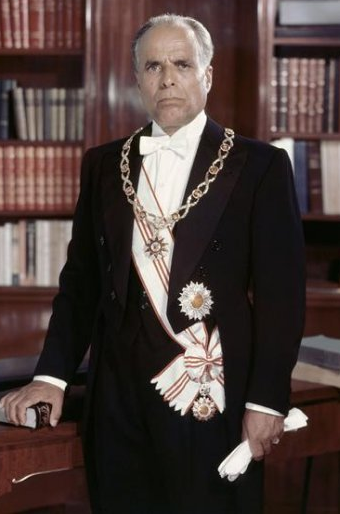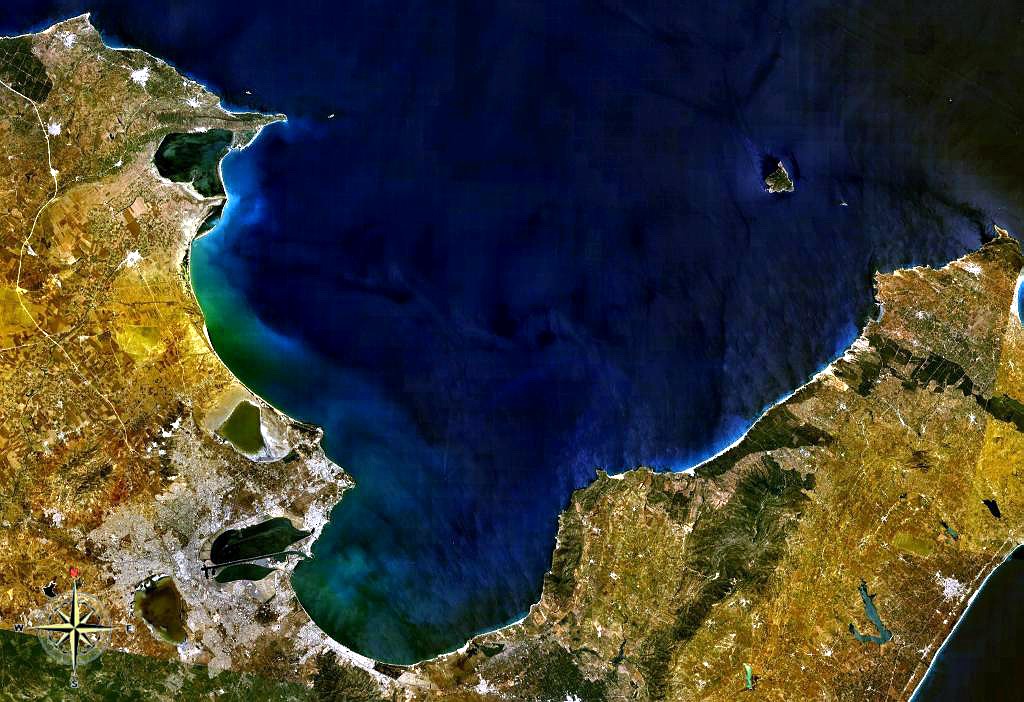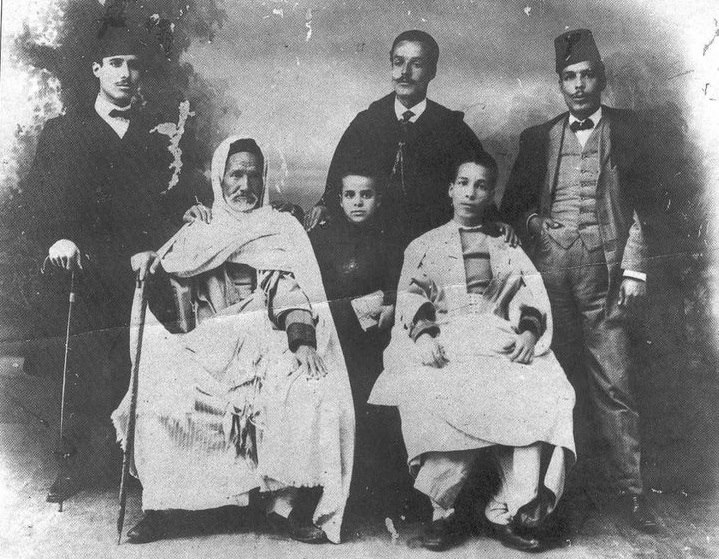|
Carthage Palace
Carthage Palace ( ara, قصر قرطاج), is the presidential palace of Tunisia, and the official residence and seat of the President of Tunisia. It is located along the Mediterranean Sea at the current city of Carthage, near the archaeological site of the ancient city, fifteen kilometers from Tunis. A house by Le Corbusier sits within the site. Complex The palace complex has four parts: the palace proper, consisting of the central building and a private wing housing two apartments, a building for presidential security and two other buildings, one of which is used for common, administrative and financial services, and general. Within the complex is the residence of the Swiss ambassador, a building ceded by Bourguiba after an attempted coup in 1962, as well as the archaeological site called " fountain with a thousand amphorae". History Originally, the palace park sheltered a residence of Mustapha Khaznadar. It became the property of an Italian (Mario Cignoni) in 1937. The r ... [...More Info...] [...Related Items...] OR: [Wikipedia] [Google] [Baidu] |
Gulf Of Tunis
{{Tunisia-geo-stub ...
The Gulf of Tunis () is a large Mediterranean bay in north-eastern Tunisia, extending for from Cape Farina in the west to Cape Bon in the east. Tunis, the capital city of Tunisia, lies at the south-western edge of the Gulf, as have a series of settled places over the last three millennia. Djebel Ressas rises to around south of the southern edge of the Gulf. The central part of the gulf, corresponding to the city of Tunis, is favorable to the implementation of a commercial port due to its location of being a well protected area. The famous city of Carthage was built on the gulf shores. References Tunis Tunis ''Tounsi'' french: Tunisois , population_note = , population_urban = , population_metro = 2658816 , population_density_km2 = , timezone1 = CET , utc_offset1 ... [...More Info...] [...Related Items...] OR: [Wikipedia] [Google] [Baidu] |
Mustapha Khaznadar
Mustapha Khaznadar ( ar, مصطفى خزندار; 1817–1878), born as Georgios Halkias Stravelakis () was a Tunisian politician who served as Prime Minister of the Beylik of Tunis from 1855 to 1873.. He was one of the most influential people in modern Tunisian history.. Biography Early life Mustapha Khaznadar was born in the village of Kardamyla on the Greek island of Chios. as Georgios Halkias Stravelakis. in 1817.. In January 1822, rebels from the neighboring islands of Samos arrived on Chios and declared their independence from the Ottoman Empire, the Ottoman sultan soon sent an army of about 40,000 to the island of Chios, where roughly 52,000 Greek inhabitants were massacred and tens of thousands of women and children were taken into slavery. During the Chios massacre, Georgios's father, the sailor Stephanis Halkias Stravelakis, was killed, while Georgios along with his brother Yannis were captured and sold into slavery by the Ottomans. He was then taken to Smyrna and then ... [...More Info...] [...Related Items...] OR: [Wikipedia] [Google] [Baidu] |
Defense
Defense or defence may refer to: Tactical, martial, and political acts or groups * Defense (military), forces primarily intended for warfare * Civil defense, the organizing of civilians to deal with emergencies or enemy attacks * Defense industry, industry which manufactures and sells weapons and military technology * Self-defense, the use of force to defend oneself * Haganah (Hebrew for "The Defence"), a paramilitary organization in British Palestine * National security, security of a nation state, its citizens, economy, and institutions, as a duty of government ** Defence diplomacy, pursuit of foreign policy objectives through the peaceful employment of defence resources ** Ministry of defence or department of defense, a part of government which regulates the armed forces ** Defence minister, a cabinet position in charge of a ministry of defense * International security, measures taken by states and international organizations to ensure mutual survival and safety Sports * ... [...More Info...] [...Related Items...] OR: [Wikipedia] [Google] [Baidu] |
Carthage Palace From Sidi Bou Said
Carthage was the capital city of Ancient Carthage, on the eastern side of the Lake of Tunis in what is now Tunisia. Carthage was one of the most important trading hubs of the Ancient Mediterranean and one of the most affluent cities of the classical world. The city developed from a Canaanite Phoenician colony into the capital of a Punic empire which dominated large parts of the Southwest Mediterranean during the first millennium BC. The legendary Queen Alyssa or Dido, originally from Tyre, is regarded as the founder of the city, though her historicity has been questioned. According to accounts by Timaeus of Tauromenium, she purchased from a local tribe the amount of land that could be covered by an oxhide. As Carthage prospered at home, the polity sent colonists abroad as well as magistrates to rule the colonies. The ancient city was destroyed in the nearly-three year siege of Carthage by the Roman Republic during the Third Punic War in 146 BC and then re-developed as Roman Cart ... [...More Info...] [...Related Items...] OR: [Wikipedia] [Google] [Baidu] |
Leïla Ben Ali
Leïla Ben Ali ( ar, ليلى بن علي, née Trabelsi; born 14 October 1956) is the widow of Zine El Abidine Ben Ali, who was President of Tunisia from 1987 to 2011. She married Ben Ali in 1992. Leïla Ben Ali was the president of the Arab Women Organization Arab Women Organization (AWO) and chair of the Basma Association, a charitable organization working to secure employment for the disabled. In July 2010, Mrs. Ben Ali founded SAIDA to improve care for cancer patients in Tunisia. During the |
Zine El Abidine Ben Ali
Zine El Abidine Ben Ali ( ar, زين العابدين بن علي, translit=Zayn al-'Ābidīn bin 'Alī; 3 September 1936 – 19 September 2019), commonly known as Ben Ali ( ar, بن علي) or Ezzine ( ar, الزين), was a Tunisian politician who served as the 2nd president of Tunisia from 1987 to 2011. In that year, during the Tunisian revolution, he fled to Saudi Arabia. Ben Ali was appointed Prime Minister in October 1987. He assumed the Presidency on 7 November 1987 in a bloodless coup d'état that ousted President Habib Bourguiba by declaring him incompetent. Ben Ali was subsequently reelected with enormous majorities, each time exceeding 90% of the vote; his final re-election coming on 25 October 2009. Ben Ali was the penultimate surviving leader deposed in the Arab Spring who was survived by Egypt's Hosni Mubarak, the latter dying in February 2020. On 14 January 2011, following a month of protests against his rule, he fled to Saudi Arabia along with his wife Leïl ... [...More Info...] [...Related Items...] OR: [Wikipedia] [Google] [Baidu] |
1987 Tunisian Coup D'état
The 1987 Tunisian coup d'état involved the bloodless ousting of the aging President of Tunisia Habib Bourguiba on 7 November 1987, and his replacement as President by his recently appointed Prime Minister, Zine El Abidine Ben Ali. The action was justified by reference to Bourguiba's failing health and Article 57 of the country's constitution. Reports later surfaced to indicate that the Italian intelligence services had been involved in planning it. Sources sometimes identify the 1987 coup as the "Révolution de jasmin" (''Jasmin Revolution'') as the jasmine flower is considered a symbol of Tunisia. However, more recent sources also use exactly the same term to identify the 2011 Tunisian Revolution. Events During the night of 6 November 1987, a group of seven doctors signed a medical report attesting to the mental incapacity of Bourguiba. Political journalist Mezri Haddad summarised the report as follows: At the same time, Bourguiba demanded new trials for 15 suspected Is ... [...More Info...] [...Related Items...] OR: [Wikipedia] [Google] [Baidu] |
Tunisian Revolution
The Tunisian Revolution, also called the Jasmine Revolution, was an intensive 28-day campaign of civil resistance. It included a series of street demonstrations which took place in Tunisia, and led to the ousting of longtime president Zine El Abidine Ben Ali in January 2011. It eventually led to a thorough democratisation of the country and to free and democratic elections. The demonstrations were caused by high unemployment, food inflation, corruption, a lack of political freedoms (such as freedom of speech) and poor living conditions. The protests constituted the most dramatic wave of social and political unrest in Tunisia in three decades and resulted in scores of deaths and injuries, most of which were the result of action by police and security forces. The protests were sparked by the self-immolation of Mohamed Bouazizi on 17 December 2010. They led to the ousting of Ben Ali on 14 January 2011, when he officially resigned after fleeing to Saudi Arabia, endin ... [...More Info...] [...Related Items...] OR: [Wikipedia] [Google] [Baidu] |
Television In Tunisia ...
Television in Tunisia reaches 94% of households. The dominant platform in the market is free satellite, though terrestrial platform reaches around 15% of the households. Tunisia has 17 free-to-air channels of which two channels are state-owned: El Watania 1 and El Watania 2. The two state-owned channels which are operated by Télévision Tunisienne (formerly ERTT) have undergone management changes since the 2011 revolution, and consequently changes in programming and content. Most-viewed channels Viewing shares, March 2015: See also * Media of Tunisia * List of newspapers in Tunisia References {{Africa topic, Television in Television stations A television station is a set of equipment managed by a business, organisation or other entity, such as an amateur television (ATV) operator, that transmits video content and audio content via radio waves directly from a transmitter on the eart ... [...More Info...] [...Related Items...] OR: [Wikipedia] [Google] [Baidu] |
Bourguibism
Bourguibism ( ar, البورقيبية ''al-Būrqībiyah'', french: bourguibisme) refers to the policies of Habib Bourguiba, the first President of Tunisia, and his followers. Bourguibism is defined by a strong commitment to national independence and specifically Tunisian nationalism (as opposed to pan-Maghrebi or pan-Arab ideas), a state capitalist approach on economic development, welfare state, a statist and corporatist interpretation of populism, strict secularism, and cultural modernity, advocating Tunisia's place as a bridge between Arab-Islamic and Western civilisation. Bourguibism is responsible for Tunisia's comparatively high divorce rates, which is one of the highest in the Arab and Islamic world, and relatively late age for women to get married (the average age for a woman is 35 years, which is much higher compared to most other Arab countries). Tunisian women are more sexually liberated, unlike their neighboring countries, and have a relatively strong role in economy, ... [...More Info...] [...Related Items...] OR: [Wikipedia] [Google] [Baidu] |
Habib Bourguiba
Habib Bourguiba (; ar, الحبيب بورقيبة, al-Ḥabīb Būrqībah; 3 August 19036 April 2000) was a Tunisian lawyer, nationalist leader and statesman who led the country from 1956 to 1957 as the prime minister of the Kingdom of Tunisia (1956–57) then as the first president of Tunisia (1957–87). Prior to his presidency, he led the nation to independence from France, ending the 75-year-old protectorate and earning the title of "Supreme Combatant". Born in Monastir to a poor family, he attended Sadiki College then Lycée Carnot in Tunis, before obtaining his baccalaureate in 1924. He graduated from the University of Paris and the Paris Institute of Political Studies (Sciences Po) in 1927 and returned to Tunis to practice law. In the early 1930s, he became involved in anti-colonial and Tunisian national politics, joining the Destour party and co-founding the Neo Destour in 1934. He rose as a key figure of the independence movement and was repeatedly arr ... [...More Info...] [...Related Items...] OR: [Wikipedia] [Google] [Baidu] |
La Marsa
La Marsa ( aeb, المرسى ') is a coastal town in far north eastern Tunisia near the capital Tunis. The population is estimated as 92,987, as of 2014. The old summer capital of pre-colonial Tunisia, it is today a popular vacation spot for many wealthy Tunisians. It is connected to Tunis by the TGM railway. Gammarth is adjacent to El Marsa further up the coast. History *Ancient Carthage was a Semitic civilization centered on the Phoenician city-state of Carthage, located in North Africa on the Gulf of Tunis, outside what is now Tunis, Tunisia. It was founded in 814 BC. Originally a dependency of the Phoenician state of Tyre, Carthage gained independence around 650 BC and established a hegemony over other Phoenician settlements throughout the Mediterranean, North Africa and what is now Spain which lasted until the end of the 3rd century BC. At the height of the city's prominence, its political influence extended over most of the western Mediterranean and it was one of the maj ... [...More Info...] [...Related Items...] OR: [Wikipedia] [Google] [Baidu] |


.gif)


.jpg)

